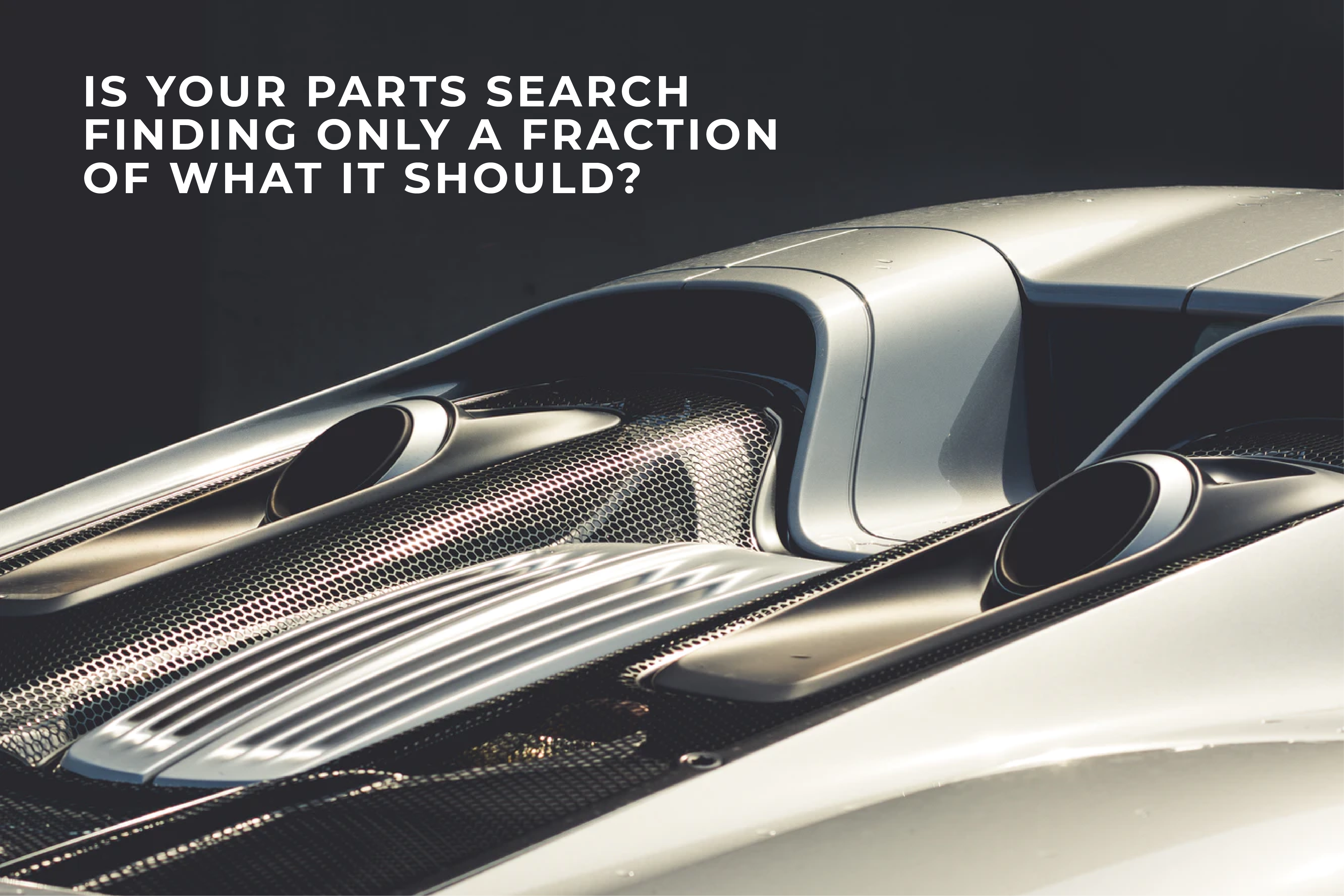Is Your Parts Search Finding Only a Fraction of What It Should?

The average repairable estimate today contains 10.5 replacement parts, and makes up nearly 45% of the overall cost of the estimate. Understandably, there is a lot of energy and focus on parts search programs aimed at locating aftermarket and recycled parts to lower the overall cost of repair. But the success of locating the optimal part at the best price is hampered by many factors, including, potentially, the appraiser writing the estimate. Let’s take a look at some of the major limiters to optimal part identification and procurement.
- The ‘pre-selection’ by the estimate writer. With many estimating workflows, the estimator is the one who selects who actually sees the parts needed for the repair. If, for example, the estimate has a bumper cover, fender and headlamp among the 10.5 parts being replaced, an OEM dealer would not have a chance to see if they could make a sale on those parts, because the estimator likely has pre-selected those as aftermarket. The same applies for the aftermarket and recycled part supplier. The estimator himself will only surface the 2-3 parts per estimate that he believes are potentially available from a non-OEM source, potentially excluding a quality part or assembly that the alternate part supplier has in stock. Recyclers frequently complain that they have great-quality, harvested parts, like washer fluid tanks or finish panels that go unsold because they are not asked about them and ordered new OEM. The solution to these problems is simple: provide a chance for all suppliers to see all parts required for the repair and the various suppliers can then put their best offer forward.
- Phantom parts. We coined this amusing term to label a serious industry problem. I believe the problem of stale catalog pricing with no information on the quality or availability of the parts listed is one of the biggest contributors to increased repair cost and cycle time. In the PartsTrader system, the supplier provides part quality, certification, salvage grading, availability in your local area and delivery times as a part of the quote process, so that the repairer can make the best choice for the parts needed. Further, we integrate the insurer’s parts policy which eliminates parts that don’t meet their standard from being shown, ensuring that suppliers are only bidding on the part quality you specify.
- OEM parts are still the majority of replacement parts. The fact is, every other parts system looks at finding the 2-3 aftermarket parts, or the less than one recycled part on the average estimate, leaving the majority of parts to be written on the estimate at OEM list price. Some may argue that there are systems that post ‘conquest OEM parts’, which is true, but they are the minority of OEM parts where there is an aftermarket alternative that has forced the OEM to lower the price to compete against the aftermarket supplier. So, in the end, even with a conquest system, those parts systems are still only addressing 2-3 parts on the average estimate. The solution here is that all parts on every estimate in PartsTrader are visible and available for quoting, providing ‘competitive tension’ on all parts. We provide that conquest pricing as well, but go beyond that. Competitive tension means that OEM parts, where there is no conquest pricing available (an airbag for example) are subject to competitive tension from the OEM parts departments we have on our system.
Like Amazon, Expedia and other marketplace systems, PartsTrader shows all the available combinations of type, quality and delivery for all parts on the estimate. PartsTrader’s open marketplace, which allows all suppliers to put forth their best offer on verifiable, quality, in-stock parts delivered at the correct time is the most effective way to manage all of the 10.5 collision parts per estimate.
Shouldn’t you be looking at all parts to drive optimal results?

Greg Horn
Greg Horn is PartsTrader’s
Chief Innovation Officer.
